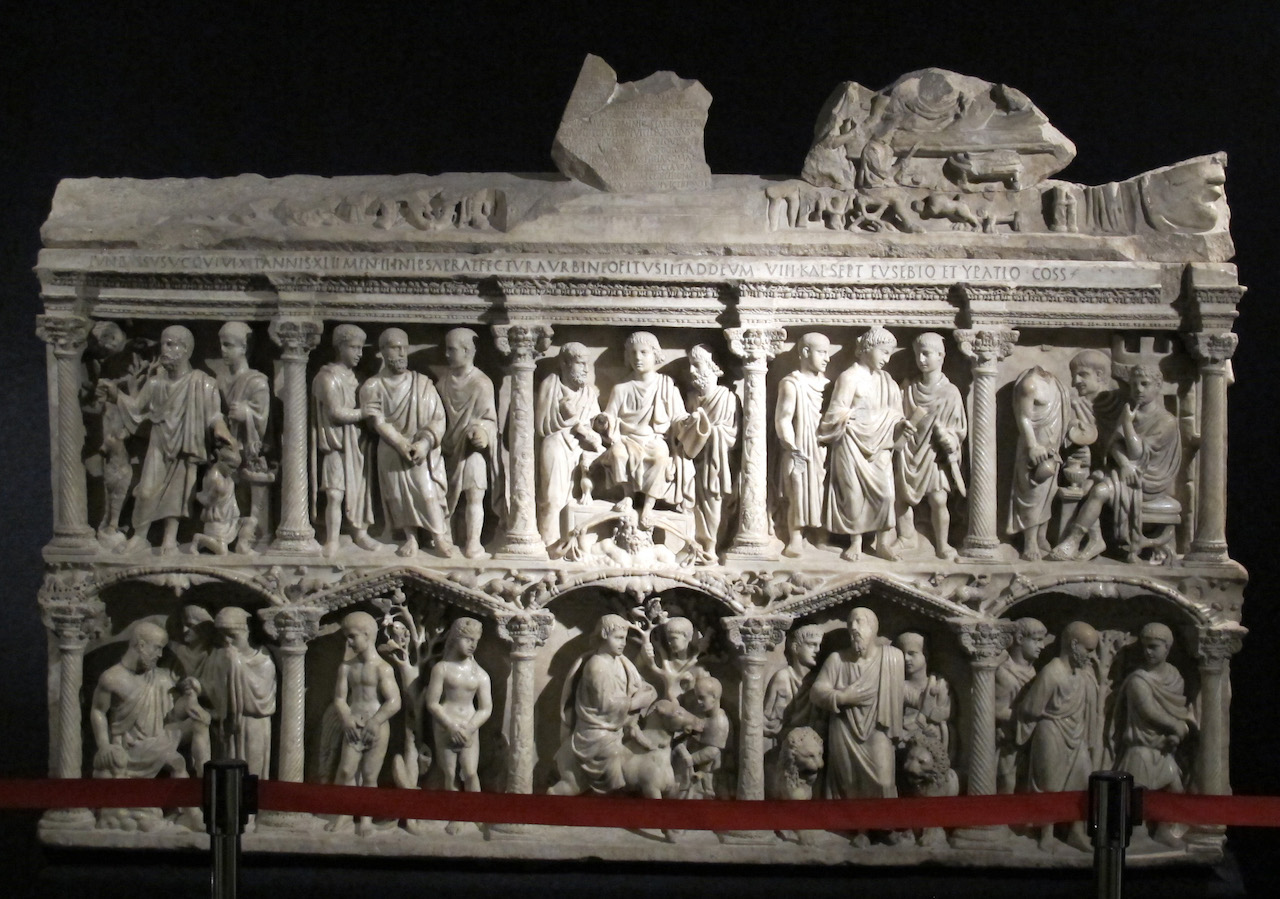Week 9
The beginnings of an identifiable Christian art can be traced to the beginning of the third century after Constantine gives out the Edict of Milan in 313. Considering the Old Testament prohibitions against graven images, it is important to consider why Christian art developed in the first place. The use of images will be a continuing issue in the history of Christianity. The best explanation for the emergence of Christian art in the early church is due to the important role images played in Greco-Roman culture. As Christianity gained converts, these new Christians had been brought up on the value of images in their previous cultural experience and they wanted to continue this in their Christian experience. For example, there was a change in burial practices in the Roman world away from cremation to inhumation. Outside the city walls of Rome, adjacent to major roads, catacombs were dug into the ground to bury the dead. Families would have chambers or cubicula dug to bury their members. Wealthy Romans would also have sarcophagi or marble tombs carved for their burial. The Christian converts wanted the same things. Christian catacombs were dug frequently adjacent to non-Christian ones, and sarcophagi with Christian imagery were apparently popular with the richer Christians. See below the sarcophagus of the Prefect of Rome Junius Bassus who died in 359 AD. Scholars believe that he converted to Christianity shortly before his death accounting for the inclusion of Christ and scenes from the Bible. This fine work of sculpture shows you the state of ancient classical sculpture in the later 4th century.
RECOMMENDED READING
Hugh Honour covers early Christian art in chapter 7, starting on page 288.

